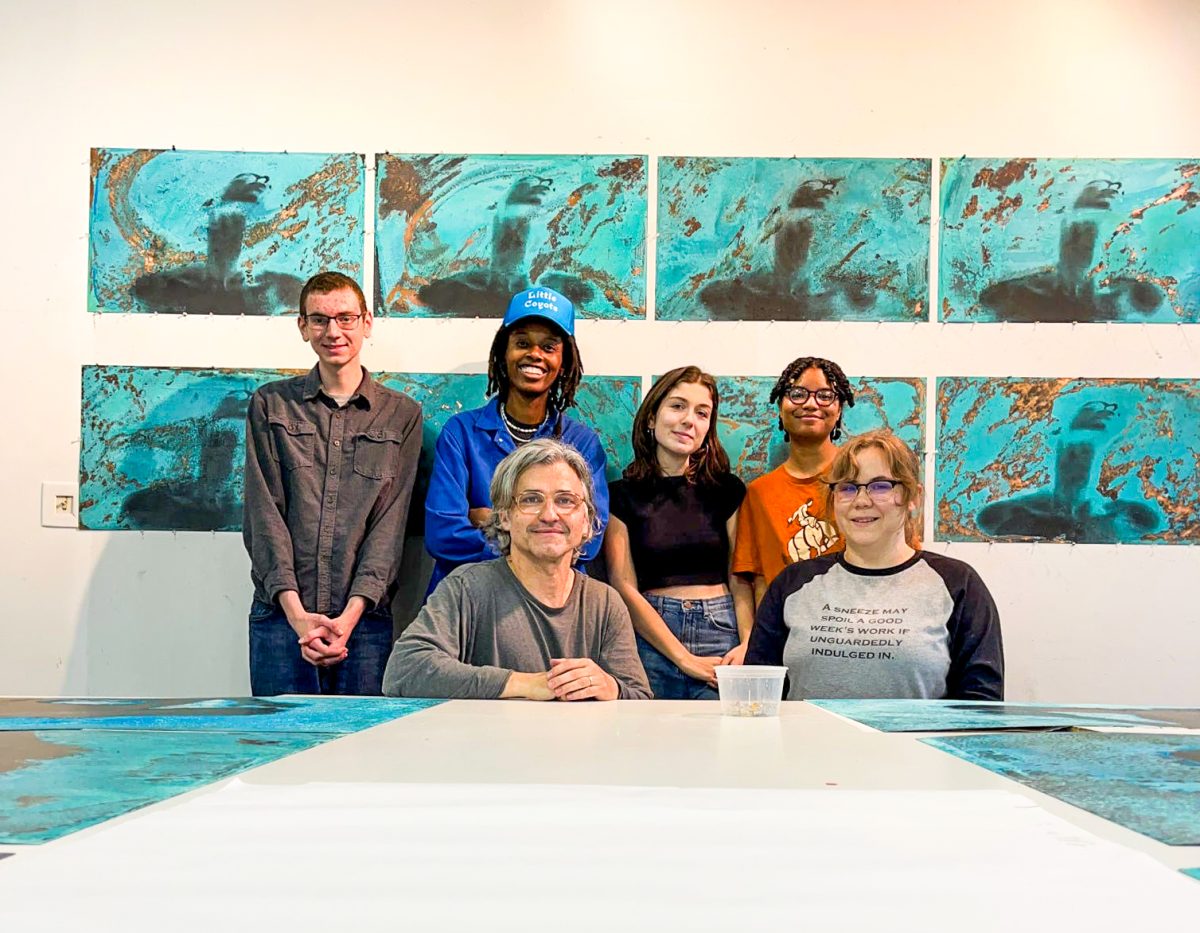Lafayette art students Ani Brutus ‘26, Emily Mackin ‘24 and Ethan Riddle ‘25 spent their summers collaborating with professional artists and perfecting their prints.
Lafayette’s Experimental Printmaking Institute (EPI), overseen this summer by professor Pedro Barbeito, acts as both a classroom and a professional non-profit printmaking studio. Professional artists from around the globe are invited to the studio to print their work and share their experiences with students. The newly formed Bergh Family Fellows Intern Scholar Program allowed Brutus, Mackin and Riddle to devote their summer to expanding their classroom knowledge in this professional setting.
Throughout the past two and a half months, these students worked alongside three professional artists: Le’Andra LeSeur, Mark Thomas Gibson and Khalil Allaik.
“[The students are] hearing [artists] think through their work as we’re working on the project, so they’re kind of like, ‘how does an artist think, how does an artist work through this material’ as opposed to ‘what we are doing in class,’ and it turns out it’s not that different. It’s only the ideas have been developed a lot more,” Barbeito said.
“It’s a very kind of genuine, mutual learning environment at EPI,” Mackin said. “I think I spent about, I want t0 say, two weeks mixing a blue for [LeSeur’s] woodcuts, which are beautiful woodcuts, but you don’t realize in an introductory printmaking course, which I took with Pedro in this spring, something like mixing ink is gonna take a lot of time, a lot of thought.”
EPI also taught students skills that extend beyond the print studio.
“I think it’s always valuable to have that collaborative environment and learn from others and kind of the way they perceive things,” Mackin said.
Although working in the printmaking studio often requires repetitive mechanical skills to finish the numerous projects created this summer, both the students and Barbeito found ways to enjoy this somewhat tedious process.
“The other thing that I really loved and I really appreciated was getting to know everyone … as one of my students said, through being vulnerable,” Barbeito said. “It’s [in] that kind of class structure that hierarchy breaks down.”
“I think it’s a great asset to anyone who’s even remotely interested in doing some art-making,” Mackin said. “I think it was a valuable experience [and] that, had I not done it, I think I still would have just … been like, ‘yeah printmaking’s cool,’ but this really added to my understanding of the professionalism of it and how meticulous but beautiful of a practice it kind of is.”




















































































































